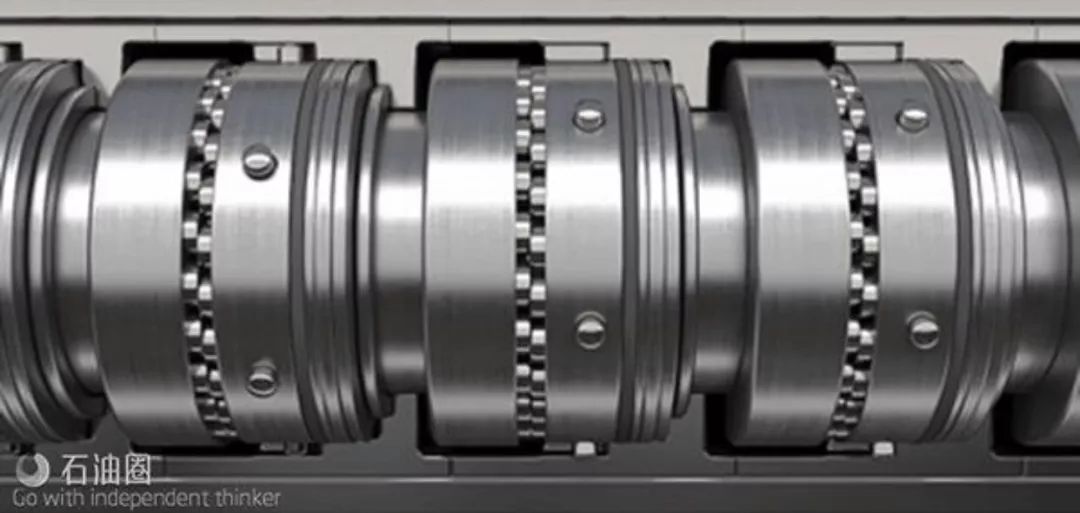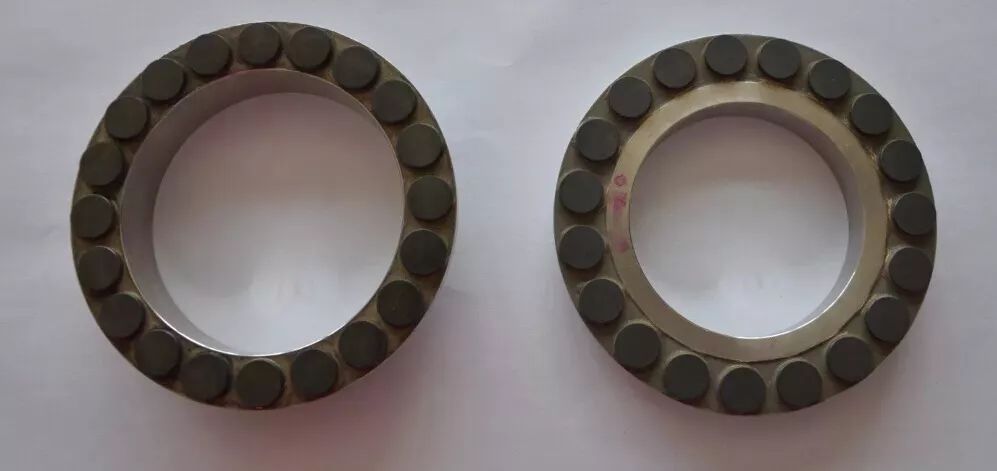Location:Home / News / Brazing solution for diamond composite PDC bearings
The American Diamond Bearing Company specializes in manufacturing artificial diamond bearing components for energy enterprises, and its diamond technology is committed to improving the competitiveness of the long-term energy industry in the United States. The company's products were showcased at the Invention and Innovation Summit organized by the Energy Research Projects Agency (ARPA-E) of the US Department of Energy. The companies participating in this seminar include Dow Chemical, Bosch Tools, and Lockheed Martin.
"This summit is a rare and exciting opportunity for us to gather with companies in the energy sector," said Craig Curry, General Manager of Diamond Bearing Company in the United States.
The US Department of Energy provides funding support to Diamond Bearing Company to research diamond bearing technology for underwater power generation. The research fund, with a total amount of 186000 US dollars, is mainly used to develop whether polycrystalline diamond (PCD) thrust bearings can be widely used in renewable energy projects of the US Department of Energy, such as underwater turbine generators and marine power (MHK) energy engines.
At the testing plant in Olham, Utah, USA, Diamond Bearing Company is preparing to conduct experiments on the water lubrication effect of polycrystalline diamond bearings in seawater powered energy engines.
Installed in the undercurrent of seawater, the seawater powered energy machine utilizes a spindle turbine to generate electricity. The main purpose of researchers testing this technology is to find a new method - to minimize the downtime and maintenance costs of factory equipment maintenance as much as possible. A major challenge at present is the inability to find suitable bearing technology, which should have uncommon bearing technology and be able to withstand variable loads in seawater, as well as the ability to shut down the machine at any time. In addition, it should have the characteristics of minimal maintenance and repair, as well as minimizing the impact of oil pollution on seawater.
The American Artificial Diamond Bearing Company believes that diamond bearings can address the aforementioned technological bottlenecks, and the seawater powered energy machines manufactured have the characteristics of economic sustainability, renewable energy, and sustainability. Without considering bearing damage, the use of unsealed ring polycrystalline diamond bearings enables the seawater power energy machine to meet variable loads, and the use of seawater as a lubricant eliminates concerns about oil pollution causing seawater pollution.
"We believe that artificial diamond is an engineering material with great potential for development," said Craig Korley, General Manager of Diamond Bearing Company in the United States. "We hope that the artificial diamond bearings in seawater power energy engines can demonstrate their advantages in other scientific and engineering fields. Moreover, the advantages of artificial diamond include hardness, thermal conductivity, strength, toughness, and wear resistance, all of which can meet the requirements."
This bearing is made by fixing artificial diamond particles or diamond powder of 2 microns and 70 microns onto a tungsten carbide matrix using a special patented cubic pressure method. Apply a pressure of 1 million PSI (pounds per square inch) to the powder on artificial diamond, with a maximum pressure temperature of approximately 1400 degrees Celsius. Cobalt embedded in tungsten carbide matrix is more conducive to the flow around diamond abrasive particles and also facilitates the growth of diamond particles. When the pressure and temperature return to normal values, tungsten carbide and polycrystalline diamond composites can be placed in a stainless steel bearing ring.
Due to the higher hardness of diamond powder compared to single crystal diamond and the advantage of being less prone to breakage, Diamond Bearing Company of the United States states that the bearing is made of sintered diamond powder, and cobalt and tungsten carbide are also beneficial for improving the hardness of the bearing and ensuring that single crystal diamond can adhere to the stainless steel ring.
In the past, the United States mainly used graphite method to manufacture diamond powder, but now it is mainly imported from China and other Asian countries.
Due to the characteristics of low friction coefficient and high load rate in air, oil, and water, diamond bearings need to be improved in some technical aspects compared to stainless steel bearings. In the future, diamond bearings will be widely used in drilling tools and equipment for oil and natural gas, as well as in equipment that utilizes flow or tidal energy for turbine power generation.
As is well known, the longer the bottomhole assembly is drilled, the greater the economic return. This is the reason why our polycrystalline diamond compact (PDC) bearings are produced, which helps our customers drill faster and longer between tool repairs.
Design and manufacture PDC bearings for downhole drilling tools.
PDC bearings provide a simple mud lubrication bearing system and durability and strength of diamonds. For drilling tool manufacturers who are not satisfied with the limited service life and load-bearing capacity of traditional bearings, PDC thrust bearings provide a high-performance and durable solution.
PDC thrust bearing
Diamond bearings PDC thrust bearings are widely used in turbodrilling tools and mud motors. We can provide sizes ranging from 1 inch to 10 inches in diameter, with good quality and competitive prices.
1. Introduction to PDC thrust bearing products
PDC thrust bearings are widely used in oilfield applications such as turbodrilling tools and mud motors. We have two different types, including PDC radial bearings and PDC thrust bearings. Compared with tungsten carbide bearings, PDC bearings have a longer working life, which is 4-10 times longer than tungsten carbide bearings, and can also withstand increased load capacity.


Popular products
News recommendations
Classification and common problems of shield tunneling tools2020-09-14
The cutting tools of shield tunneling machines can be classified according to their movement mode, arrangement position, method, and shape. According …
New type of aluminum alloy brazing material2020-09-14
The new brazing material and flux have a lower brazing temperature, which shortens the flow and filling time of the brazing material, lowers the brazi…
Brazing of aluminum and aluminum alloys2020-09-14
It should be pointed out that the process brazing performance of materials cannot be changed. With the development of brazing technology, new brazing …
Classification of brazing materials and flux2020-09-14
The main metal element in soft solder is tin, followed by lead, bismuth, zinc, gallium, antimony, cadmium, silver, copper, etc. The different combinat…
 If you have any questions or suggestions about the product, or if you want to know more, you can contact us at any time.
If you have any questions or suggestions about the product, or if you want to know more, you can contact us at any time.

Mobile website
Our Product
Contact Us